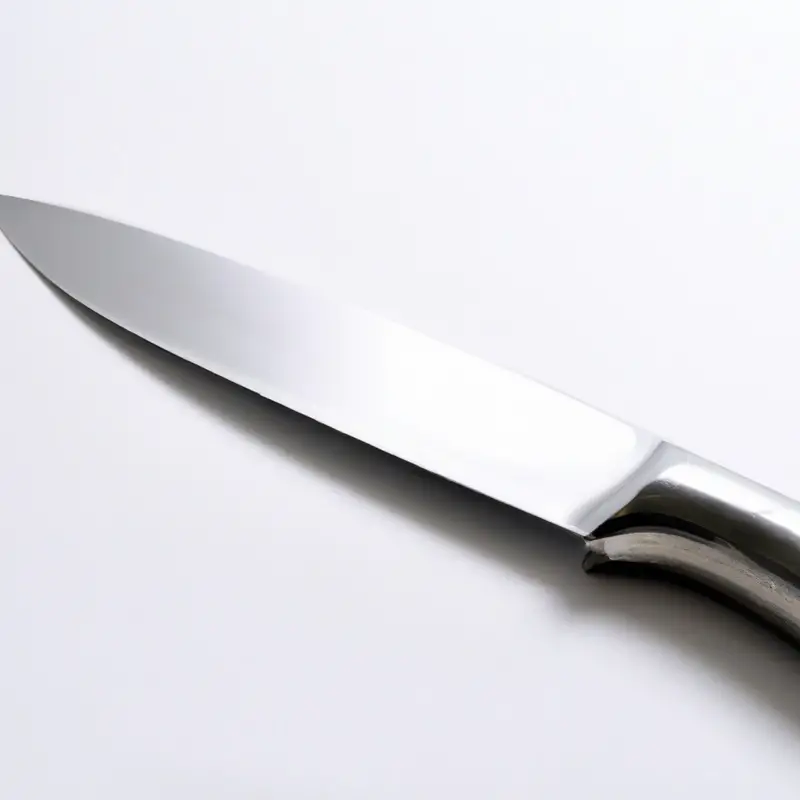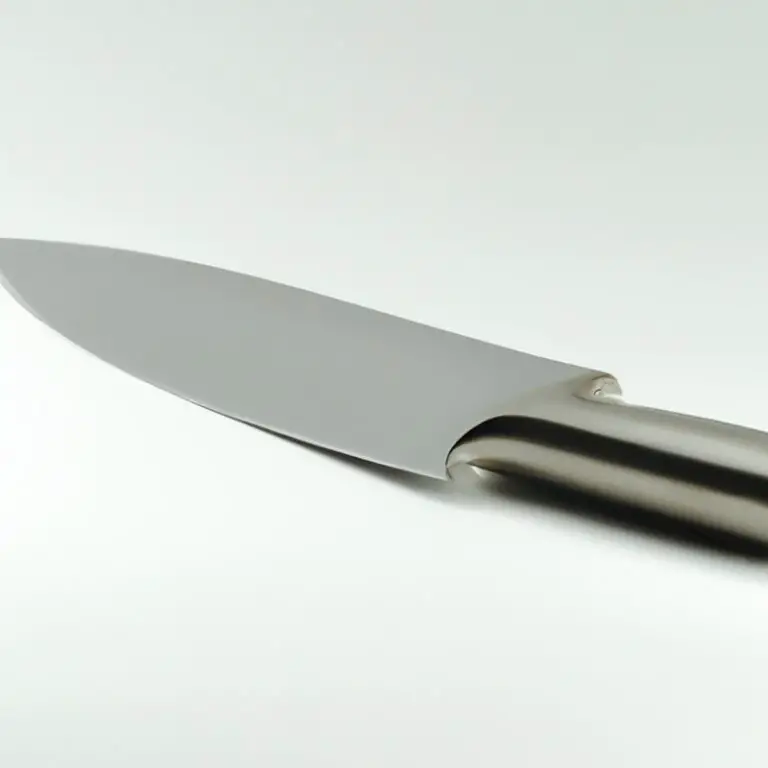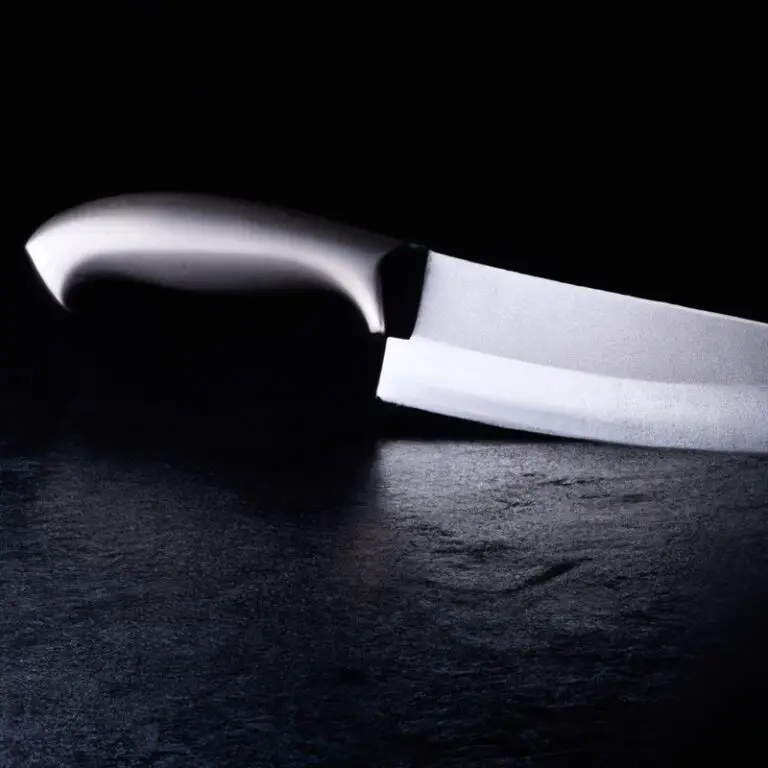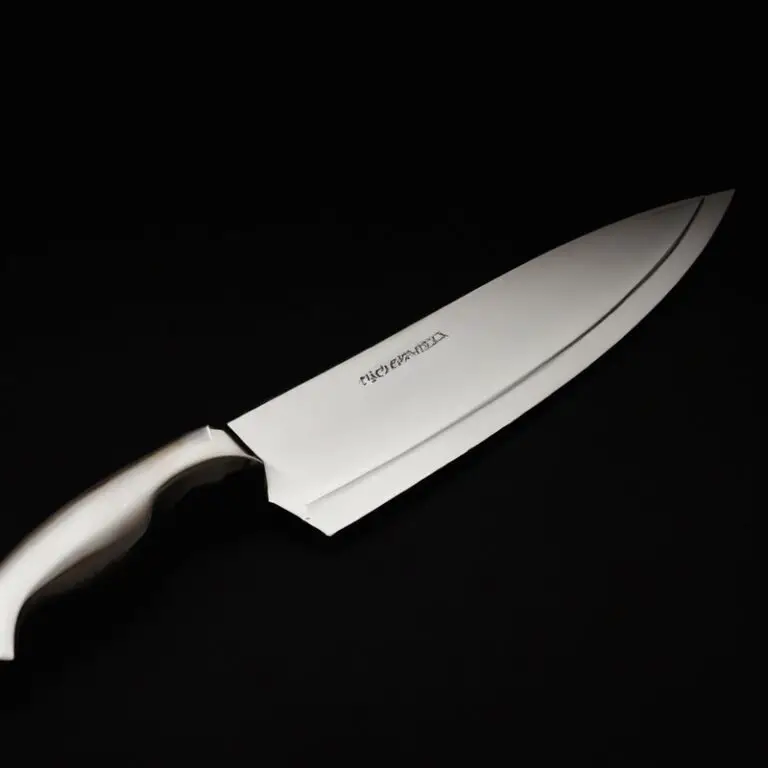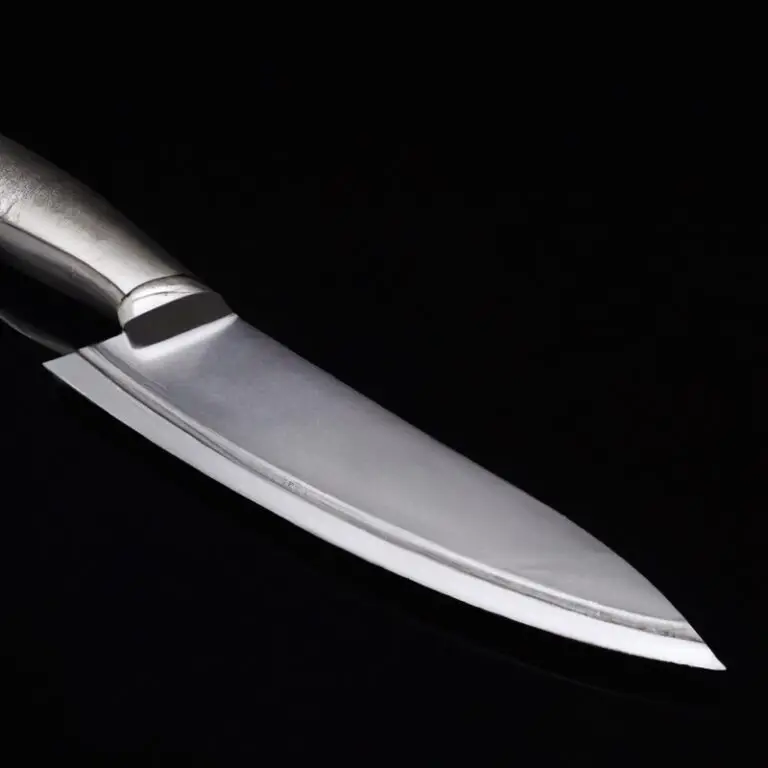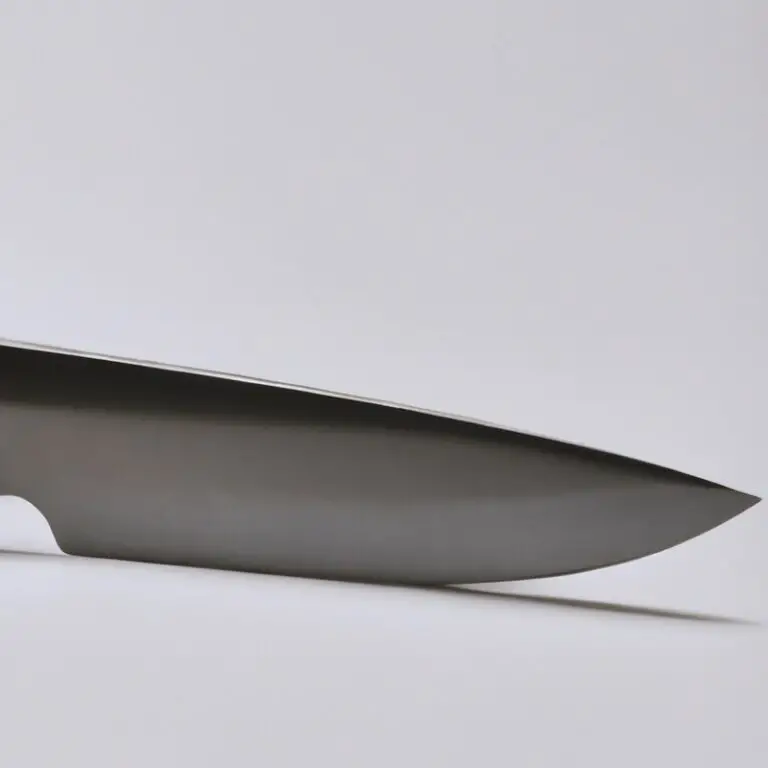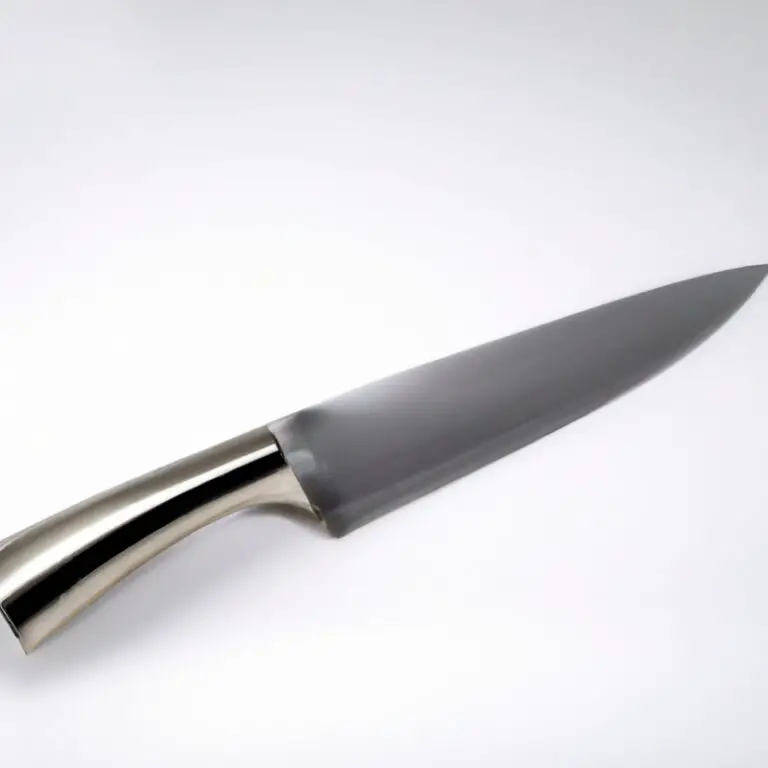How To Cut Through Tough Cuts Of Meat With a Santoku Knife Like a Pro?
Key Takeaways:
- A Santoku knife’s unique design allows for precise and efficient cutting of tough cuts of meat.
- Proper technique, including holding the knife at a specific angle and using a rocking motion, is key to successfully cutting through tough meat.
- Sharpening the Santoku knife regularly is essential to maintaining its effectiveness and longevity.
- Choosing the right size and weight of Santoku knife for your personal needs and comfort level can make a significant difference in the ease and efficiency of cutting tough cuts of meat.
Do you always end up with tough and chewy meat when cooking? It can be frustrating when you invest so much time and effort into preparing a meal, only to have it turn out wrong.
But fear not, because with the right tool and techniques, you can cut through tough meat like a pro.
In this article, I’ll show you how to use a Santoku knife to tackle even the most stubborn cuts of meat. From understanding the knife’s anatomy to proper pressure application, you’ll be slicing through meat fibers like a hot knife through butter in no time.
Let’s get started!
| Steps | Description |
|---|---|
| Step 1 | Choose a good quality Santoku knife with a sharp blade. Make sure it is properly sharpened before you start. |
| Step 2 | Prepare the meat by trimming any excess fat and removing any bones. This will make it easier to cut through the meat. |
| Step 3 | Use the Santoku knife to make shallow cuts across the grain of the meat. This will help tenderize the meat and make it easier to cut through. |
| Step 4 | Hold the Santoku knife at a slight angle and use a sawing motion to cut through the meat. Take your time and make sure to use even pressure. |
| Step 5 | Repeat the process until the meat is cut into the desired size. |
Understanding the Anatomy of a Santoku Knife for Cutting Tough Cuts of Meat
The Santoku knife is a multipurpose knife with a distinct shape that comes from its anatomy. Its broad, straight blade measures between five to eight inches in length, with a flat cutting edge and a thin spine.
The blade’s angled tip, known as a sheep’s foot, curves downwards to meet the flat edge, forming a blunt point.
This design enables the knife to perform various cutting tasks, including slicing, dicing, and mincing vegetables, fruits, and meats. For cutting tough cuts of meat, a Santoku knife’s unique design and sharp blade make it an excellent tool for the job.
Its broad, flat blade with a sharp edge is ideal for cutting across tough meat fibers effortlessly.
Understanding the anatomy of the Santoku knife is crucial for its effective use.
Importance of a Sharp Blade in Cutting Tough Cuts of Meat Using Santoku Knife
The sharpness of the blade is critical when cutting through tough cuts of meat using a Santoku knife. A dull blade will not only make the process longer and more challenging but can also damage the meat.
When the blade is sharp, it can easily slice through the meat fibers without tearing or affecting the texture of the meat.
A sharp blade ensures accurate and efficient cuts, which results in evenly cut pieces of meat that cook at the same rate. Additionally, a sharp blade reduces the risk of injury since it requires less pressure to make cuts.
Therefore, keeping your Santoku knife sharp is vital for achieving the best results when cutting through tough meat cuts.
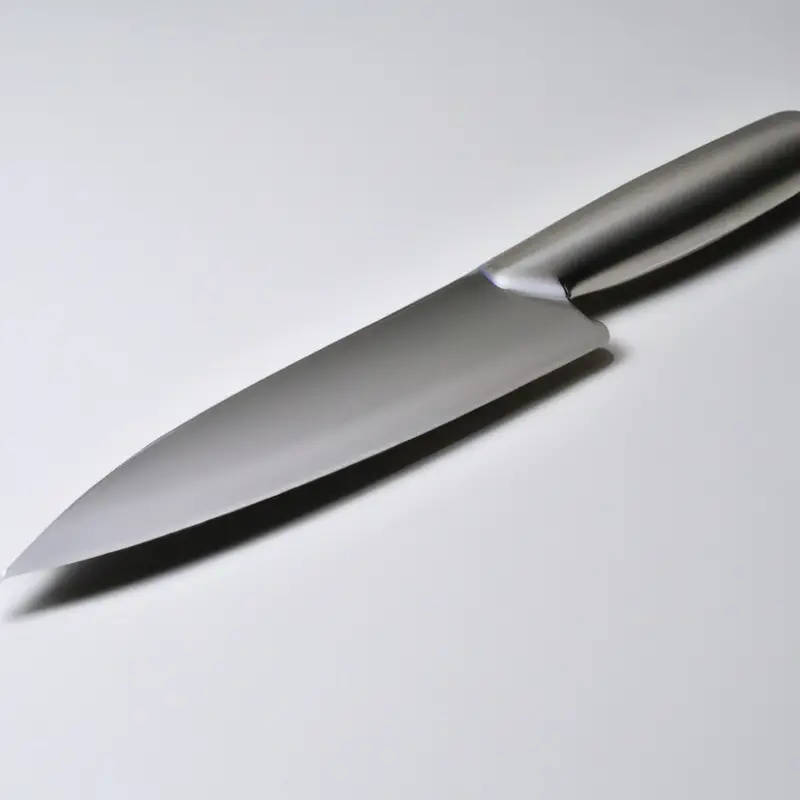
Techniques to Sharpen a Santoku Knife for Cutting Through Tough Cuts of Meat
To sharpen a Santoku knife for cutting through tough cuts of meat, follow these techniques:
- Use a whetstone to sharpen the blade at a 15-20 degree angle for each side. Move the blade in a circular motion while applying pressure.
- Hone the blade with a honing rod before each use to maintain the edge.
- Use a leather strop to refine the blade’s edge after sharpening.
- Avoid using serrated sharpeners as they can damage the blade.
- Only use mineral oil as a lubricant while sharpening to prevent the stone from clogging.
By maintaining a sharp edge on your Santoku knife, you can effortlessly cut through tough cuts of meat.
Proper Ways of Applying Pressure while Cutting Tough Cuts of Meat Using Santoku Knife
To properly cut through tough cuts of meat using a Santoku knife, it is important to apply the right amount of pressure while using the knife. When applying pressure, it is best to use a rocking motion, starting at the heel of the blade and moving towards the tip.
This will help to evenly distribute the pressure and achieve a smooth cut.
Additionally, it is important to let the weight of the knife do the work, rather than trying to force the knife through the meat. This will ensure a more controlled cut and prevent any accidents.
Lastly, make sure to keep a firm grip on the handle to maintain stability and accuracy while cutting through tough meat cuts.
Guiding Tips for Cutting Different Types of Tough Meat Cuts with Santoku Knife
Guiding Tips for Cutting Different Types of Tough Meat Cuts with Santoku Knife:
- For tenderloin and ribeye, grip the meat firmly and make smooth, even strokes with the knife.
- For flank and skirt steak, cut across the grain at a slight angle to ensure tenderness.
- For brisket and other large cuts, use a sawing motion to break down the tough fibers.
- For tough meats with bones, use the tip of the knife to cut around the bone and separate the meat from it.
- Always cut against the grain to avoid tough and chewy meat.
- Cut thinner slices for tougher meats to reduce the effort needed for chewing.
- Apply consistent pressure throughout the cut to avoid uneven slices and cuts.
- Allow the knife to do the work instead of forcing it through the meat.
- Use a sharpened Santoku Knife for easier cutting.
- Keep the blade at a slight angle to the meat for optimal results.
How to Slice Tough Meat Cuts with a Santoku Knife without Tearing the Meat Fibers
To slice tough meat cuts with a Santoku knife without tearing the meat fibers, start by cutting against the grain. This means that you should cut perpendicular to the direction of the muscle fibers.
Cutting with the grain will result in long, stringy pieces of meat that are difficult to chew.
Additionally, use a sawing motion instead of straight downward pressure when cutting through tough meat. This will help break apart connective tissues and make the meat more tender.
Make sure your Santoku knife is sharp, as a dull blade will tear the meat fibers instead of slicing cleanly.
Also, use a slicing motion instead of chopping, as chopping can also result in torn fibers. Finally, let the meat rest for a few minutes before slicing.
This allows the juices to redistribute, making it easier to slice without tearing.
By following these tips, you can slice tough meat cuts with a Santoku knife without ruining the texture of the meat.
How to Slice Through Large and Thick Tough Meat Cuts Effortlessly with a Santoku Knife
To slice through large and thick tough meat cuts effortlessly with a Santoku knife, it is crucial to follow these steps:
- Use a sharp Santoku knife to make the first incision on the meat.
- Slowly move the blade back and forth while keeping the knife at a slightly angled position.
- Apply steady pressure while slicing through the meat to avoid tearing the fibers.
- Repeat the slicing motion until the desired thickness is achieved.
- Adjust your grip on the knife handle to allow for better control and precision.
By following these steps, you can ensure that you slice through tough meat cuts effortlessly while still maintaining the meat’s texture and integrity.
Preparing Tough Meat Cuts for Better Cutting Results with a Santoku Knife
Preparing tough meat cuts for better cutting results with a Santoku knife requires proper technique and preparation. Before cutting, ensure that the meat is thawed completely and at room temperature for optimal results.
Next, trim any excess fat or connective tissue from the meat to prevent it from interfering with the blade’s cutting ability.
Use a sharp knife to perform this task effectively. Then, slice the meat against the grain to ensure that it’s tender and easy to cut.
The grain refers to the direction of muscle fibers in the meat.
Cutting against the grain creates shorter fibers that are much easier to chew and slice through. Lastly, use a proper cutting board to avoid damaging your knife’s blade.
A soft surface like wood or bamboo is preferable to a hard surface like a granite countertop.
By following these steps, you’ll be able to prepare tough meat cuts for better cutting results with a Santoku knife.
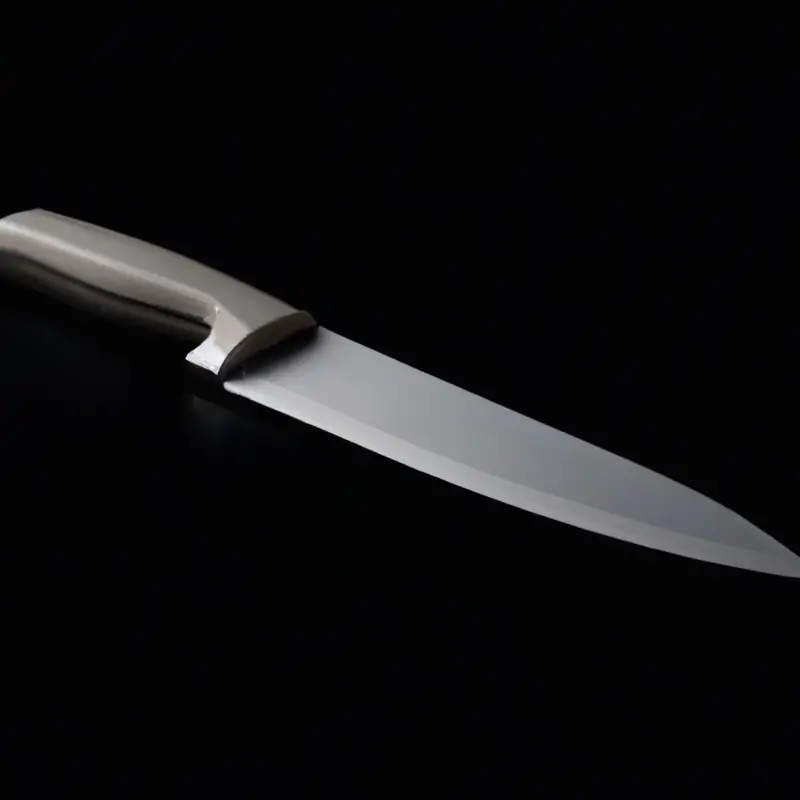
Maintaining Proper Angle for Efficient Cutting of Tough Meat Cuts with a Santoku Knife
Maintaining the proper angle is crucial for efficient cutting of tough meat cuts with a Santoku knife. The angle should be around 15-20 degrees, and it’s important to maintain this angle consistently throughout the cutting process.
To maintain the correct angle, hold the knife blade perpendicular to the cutting board and keep your wrist straight.
Apply gentle downward pressure on the knife while slicing through the tough meat. Avoid moving the knife sideways as it will cause the meat fibers to tear, making it difficult to cut slices.
Cutting in a single smooth motion also helps maintain the proper angle and produce clean cuts.
Continuously sharpening the blade will also help preserve the correct angle and ensure a better cutting experience.
Safety Features to Consider While Cutting Through Tough Meat Cuts with a Santoku Knife
In order to cut through tough meat cuts with a Santoku knife safely, there are several safety features to consider. First and foremost, make sure to use a cutting board that won’t slip and slide around.
This will prevent the knife from accidentally slipping and injuring you.
Furthermore, always keep your fingers and hands behind the blade, using your non-dominant hand to hold the meat in place while the dominant hand makes the cuts. Additionally, keep the knife close to your body and use your forearm and elbow to apply pressure instead of your wrist, as this can cause strain or injury.
Another key safety feature is to use a knife with a comfortable grip that won’t slip from your hands.
A properly balanced knife with a solid grip will help ensure that you are able to make clean cuts without losing control of the knife. Lastly, make sure to use a knife that is appropriately sized and sharpened for the job.
A dull or undersized knife may require you to use more force, which can result in injury or accidents.
By taking these safety features into account, you can reduce the risk of injury while successfully cutting through tough meat cuts with a Santoku knife.
Final Verdict
Mastering the art of cutting through tough cuts of meat with a Santoku knife requires patience, practice, and precision. By understanding the anatomy of the knife, techniques for sharpening the blade, proper application of pressure, and the importance of maintaining a correct angle, you can create smooth cuts that will impress your guests.
Remember to always prioritize safety when working with sharp knives and follow proper guidelines for meat preparation.
With consistent practice and attention to detail, you can elevate your culinary skills and create expertly sliced meats with ease. Trust in your abilities and enjoy the process of mastering this culinary technique.

